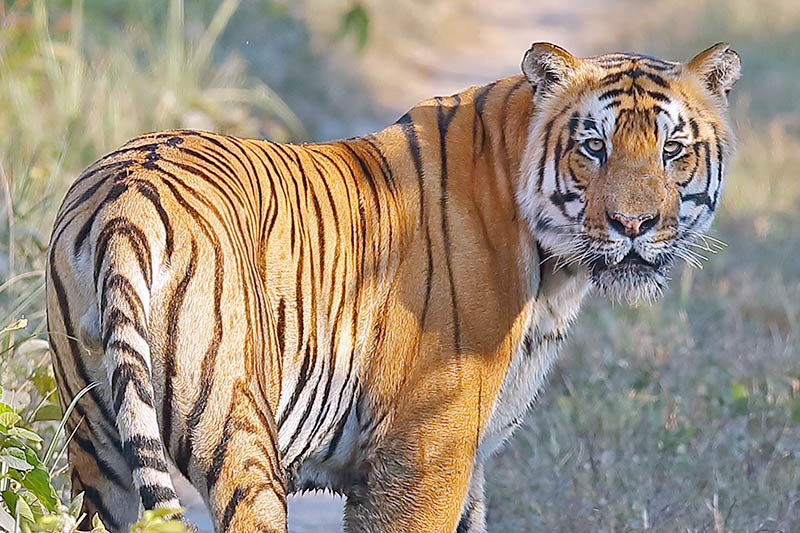Tiger conservation gets tougher
CHITWAN: Conservation of Royal Bengal Tiger (Pate Bagh) has become more challenging because of increasing encroachment and unregulated activities of locals at the Chitwan National Park (CNP), a habitat to 140 of the endangered wild cats, stakeholders say.
Chief Conservation Officer at the CNP, Bed Kumar Dhakal stated that the conservation of the endangered wild animal was becoming more challenging due to increasing human population and wanton encroachment on forests and the buffer zones.
Dhakal shared that the tigers in CNP sometimes were tracked in the Parsa National Park and the Balmiki Tiger Reserves in the neighbouring areas in search of spacious habitat.
Moreover, unregulated activities of locals in buffer zones such as fishing, fern picking, cutting Bumbershoot and uncontrolled invasion by wild weeds such as Mikania among others are also posing threat to the depletion of water sources and decrease of carnivore wildlife making the protection of the wild cats tougher.
Narrowing habitat, fragmentation of forest, poaching, illegal trade, lack of institutional structure, shortage of competent human resource, lack of scientific research and study and short of effective monitoring among others are the challenges for tiger conservation of late, shared CNP's former Chief Conservation Officer Shivaraj Bhatta.
Chitwan National Park, including the buffer zone, sprawls across 1,300 square kilometres.
Dr Chiranjivi Pokharel, a tiger specialist at the National Trust for Nature Conservation's Central Zoo, opined that the loss of habitat, poaching and smuggling of the body parts of the wild animals and depleting food were the major challenges facing tiger conservation.
Dr Pokharel shared the Royal Bengal Tiger is found across 13 countries across the globe and among the 9 species, three have already gone extinct. He strongly voiced for effective coordination of efforts for the conservation of the tiger from one and all concerned agencies in coming days.
Nepal had counted 198 tigers in 2013 Survey. Among them, the highest numbers (120) were found in Chitwan National Park, 50 in Bardiya National Park, four in Banke National Park, seven in Parsa National Park and 17 in Shuklaphanta National Park.
The Royal Bengal Tiger is listed in the Convention on International Trade in Endangered Species (CITES).






